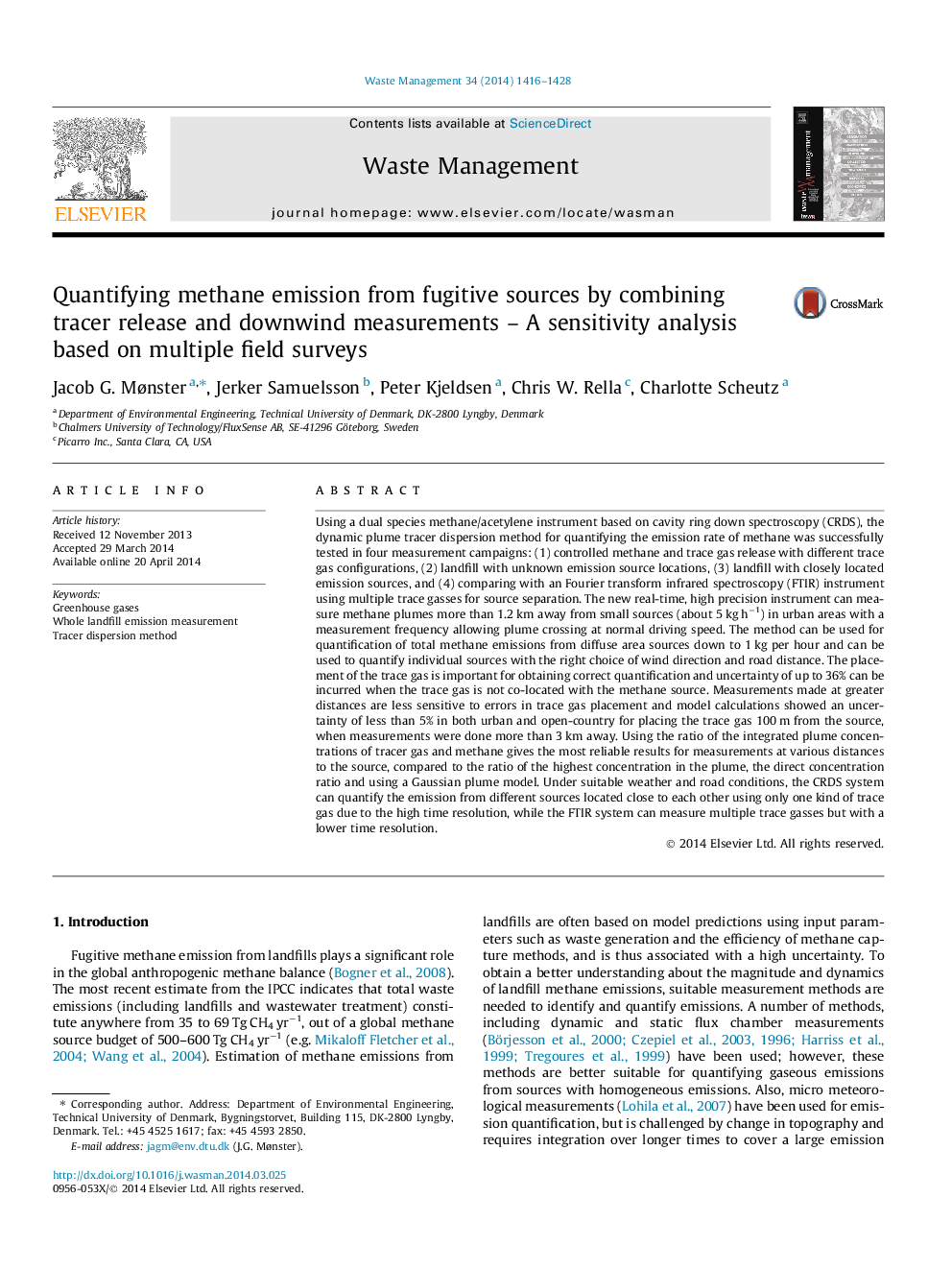| کد مقاله | کد نشریه | سال انتشار | مقاله انگلیسی | نسخه تمام متن |
|---|---|---|---|---|
| 4471493 | 1315030 | 2014 | 13 صفحه PDF | دانلود رایگان |
• A new methane/acetylene analyser was tested for quantifying whole landfill gas emission.
• Limitations of the tracer dispersion method were successfully studied.
• Improved time resolution enabling source identification and individual quantification.
• Correct trace gas placement was found to be important.
Using a dual species methane/acetylene instrument based on cavity ring down spectroscopy (CRDS), the dynamic plume tracer dispersion method for quantifying the emission rate of methane was successfully tested in four measurement campaigns: (1) controlled methane and trace gas release with different trace gas configurations, (2) landfill with unknown emission source locations, (3) landfill with closely located emission sources, and (4) comparing with an Fourier transform infrared spectroscopy (FTIR) instrument using multiple trace gasses for source separation. The new real-time, high precision instrument can measure methane plumes more than 1.2 km away from small sources (about 5 kg h−1) in urban areas with a measurement frequency allowing plume crossing at normal driving speed. The method can be used for quantification of total methane emissions from diffuse area sources down to 1 kg per hour and can be used to quantify individual sources with the right choice of wind direction and road distance. The placement of the trace gas is important for obtaining correct quantification and uncertainty of up to 36% can be incurred when the trace gas is not co-located with the methane source. Measurements made at greater distances are less sensitive to errors in trace gas placement and model calculations showed an uncertainty of less than 5% in both urban and open-country for placing the trace gas 100 m from the source, when measurements were done more than 3 km away. Using the ratio of the integrated plume concentrations of tracer gas and methane gives the most reliable results for measurements at various distances to the source, compared to the ratio of the highest concentration in the plume, the direct concentration ratio and using a Gaussian plume model. Under suitable weather and road conditions, the CRDS system can quantify the emission from different sources located close to each other using only one kind of trace gas due to the high time resolution, while the FTIR system can measure multiple trace gasses but with a lower time resolution.
Journal: Waste Management - Volume 34, Issue 8, August 2014, Pages 1416–1428
